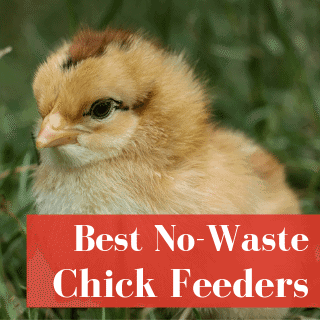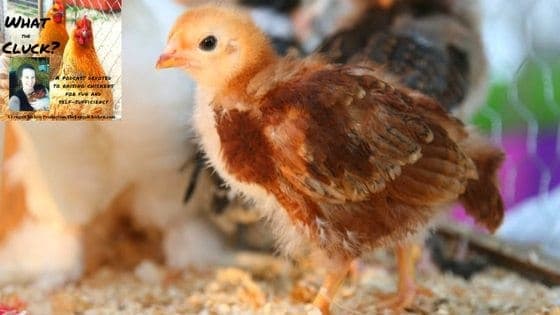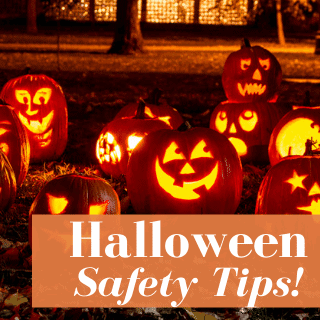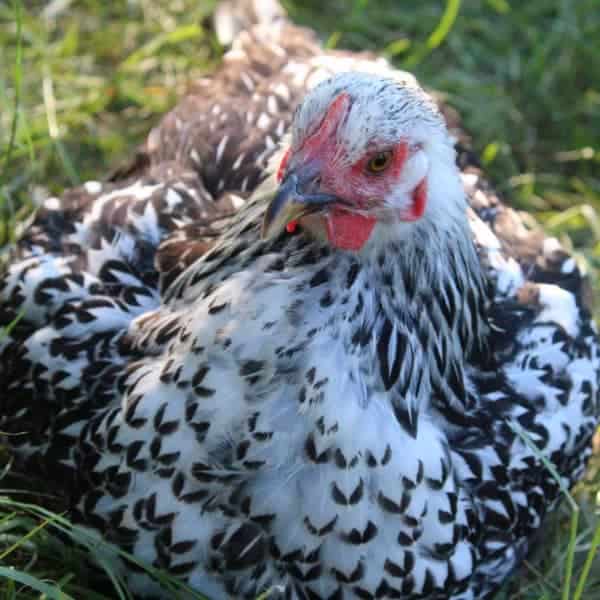Do you need to know how to catch a rooster with your hands but are afraid you’ll get hurt?
Read along to discover how I catch the most aggressive rooster in my backyard chicken flock – without getting a scratch on me! While it’s completely natural for roosters to protect their territory, it’s also a real drag when one tries to beat you up on a daily basis.
As time goes on, you’ll probably need to give your rooster some kind of medical treatment or catch him for some other reason- buuuuuutttt…..you want to do it without also getting medical treatment yourself!
In this article, I’m going to show you how to catch a rooster with your hands….and without getting hurt.
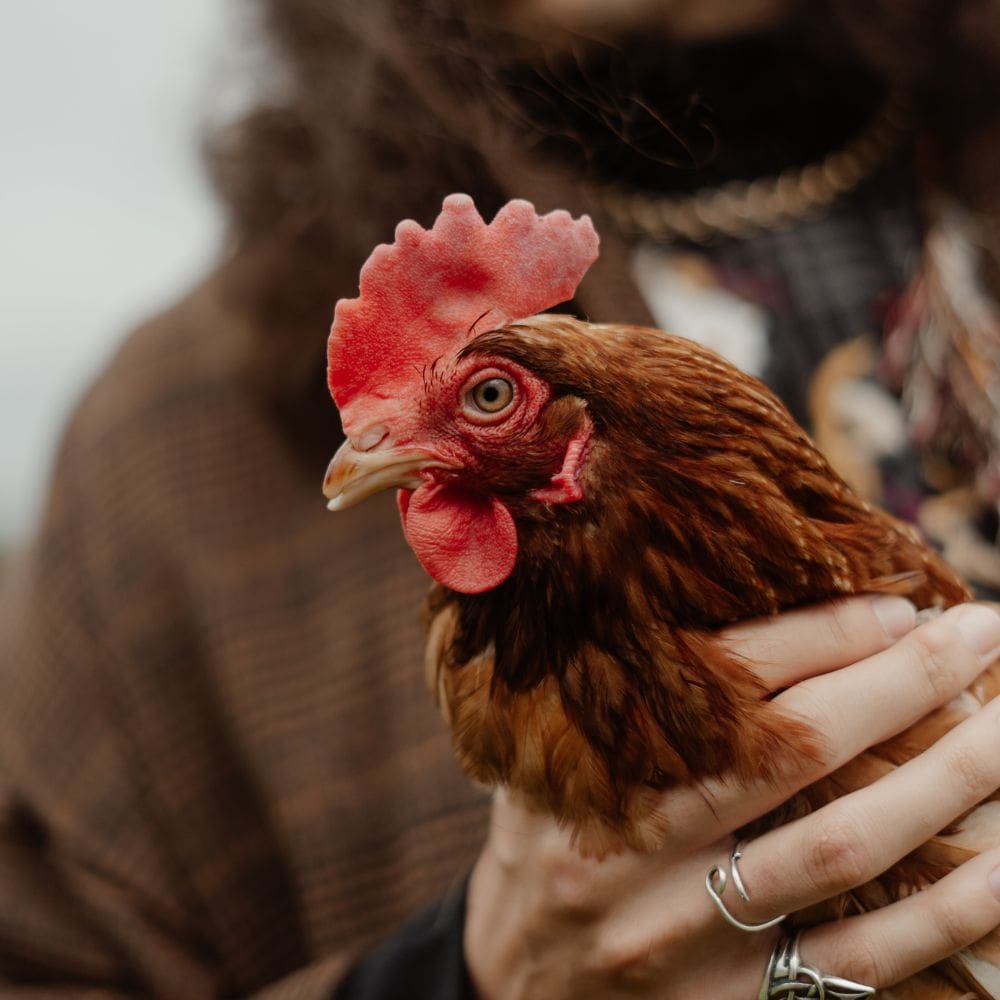
Table of Contents (Quickly Jump To Information)
Why do roosters attack?
Chickens don’t have many natural ways to protect themselves. In fact, running away from predators and flogging with their spurs are really all the things roosters can do.
From a survival standpoint, it’s important that chickens exercise any natural defenses they have. Plus it’s important that they establish the pecking order within their flock. So, from that perspective, it’s easy to understand why roosters attack. We don’t want to throw all roosters into the bad bird category just because they are doing what they were made to do.
Even though we keep chickens as pets, it can be hard to remove their natural survival habits, and in some cases, we don’t WANT our fluffy butts to be defenseless. On our farm, there have been many, many instances where predators have tried to take down our backyard chicken flock – and the rooster has saved the day.
In domestic breeds, it’s uncommon for roosters to want to attack humans, although it can (and does) definitely happen.
On our farm, we’ve only had 3 roosters (out of hundreds) who really came after humans. One stopped eventually (and he’s now a sweetheart of a tame rooster) but the other 2 just never got over it. They had their hearts set on protecting their lady friends even though we weren’t threatening them.
Particularly once they reach maturity (around 7 months old), you might notice your rooster becoming more and more aggressive.
You can read this article to find out how to train a rooster to stop attacking you.
Now, just for clarification, you should never have to deal with a rooster that hurts people if it’s making life difficult, and it’s okay to find another home for him.
However, if you choose to keep him, you’ll probably need to catch your rooster at some point.
How do roosters attack?
Without getting too deep into this conversation, when roosters attack, they might:
- Fly up at you
- Dig their spurs into you
- Bite you with their beak
- Hit you with their wings
- Divebomb you from above (I’ve had this happen, and it’s actually pretty painful)
- Charge at you or chase you with their feathers ruffled
How to catch a rooster with your hands (without getting hurt)
So, you have an escaped chicken, a rooster who has eluded the chicken coop – and you need to catch this wild child. But, how?
The easy way is to call a fellow chicken owner who already has the process down. Some folks just have a knack for it, carry no fear with them, and get the job done like it’s no big deal. But, you might not have time to call said chicken owner or you might just want to learn to do it yourself. In that case, read on.
Do it at night
If you have to catch a rooster, the easiest time possible to nab him is during night time or just after sunset. A sleeping rooster is the easiest rooster to catch.
Chickens like to roost after sundown. They can’t see the world as well, making them a prime target for nocturnal predators. So, they know to stay still and quiet when it’s dark. Because of this, your rooster is much less likely to run away at night. They are bedded down and quite sedated – and that makes catching him much easier for you.
Lure him with treats
You might have to catch him during the day, in which case you’ll have to take another approach. Your rooster is just like your hens, they live for their favorite food. So, why not lure him with some mealworms or chicken scratch?
While he’s pecking away at the nutritious goodies, approach him slowly and from behind – then gently place your hands around his body to hold his wings down in place.
Net or blanket
If you can’t wait until roosting time, and you need to catch this fellow during the day – you can attempt using a net or blanket if you are too afraid to use your hands. This can be a bit tricky, and you might want a helper with you.
You’ll need to try luring him with treats or shoo him into a corner, and then place a net over him or toss a blanket on top of him. Once you have him “trapped” you will have to act quickly by grabbing him securely. He will fight and squawk so keep that in mind and don’t let it convince you to let loose.
Use a tool
There is a tool called a poultry hook. It’s a simple pole with a hook that you can use to “grab” a rooster by the foot. He will likely flop around and act like you are killing him. But it’s fast and easy. I do believe it could increase the chances of an accidental injury so be sure to follow the instructions.
Tips On How To Catch a Rooster
Be confident
The worst thing you can ever do when dealing with an aggressive rooster is show that you’re scared. He’s already scared of you, and he will take your fear as a reason to attack.
Further, you should also never turn your back to an aggressive rooster – they’ll know you’re scared and take the opportunity to chase you.
If you’re not confident, you also might tip them off that you’re trying to catch them and that you are scared – and once your cover is blown, you will have a harder time nabbing him.
Which leads us to my next tip – covering yourself so even if you get attacked, it doesn’t hurt.
Gloves are critical
Even though your rooster will be quieter at night, you should still wear gloves or other protection depending on how aggressive he is.
We had one that was very, very aggressive – and gloves gave us confidence that if he did attack, we were less likely to get spurred. When I wear gloves, I use leather work gloves, which are hard to penetrate.
I’ve used gloves and I’ve used socks – both work. Socks are good because you can layer them, which gives you even more padding.
Boots are essential
Just like gloves, boots are necessary. You can lift up your leg and use your boot as protection for yourself if needed. It’s simple enough and IF you need the extra protection you’ll be glad you had them on.
You can wear cowboy boots, farm boots, work boots, or mud boots.
Coop training
If you train your chickens, hens and roosters alike, to come to the coop when you call – then catching them when needed is much easier. Getting them to the enclosed coop is half the battle.
How do you coop train? It’s easy with chicken treats. If you offer your flock treats when they follow you to the coop, they will always follow you to the coop. One tip is to call them verbally the same way when you plan on giving them treats. When you are not giving them treats and you are just going to the coop to do chores or clean, then don’t call them with the special call you use for treat dispersal.
Chickens are smart and they’ll learn the routine in no time. Here are some treats that will be sure to keep them coming!
What to do with him?
Make sure you first know what you’ll do with him once you have him.
In our case, we usually need to grab them for medical treatment or to remove an errant string around their feet, so we’ll put him into a large dog crate.
Whatever you decide to use, have it handy so you can immediately transfer him. The less time you’re holding him, the more successful you’ll be.
Once you’re confident and invulnerable to getting hurt, grab him (without crushing him) around his middle and over his wings so he can’t flap them hurt you.
Hold him about as tight as you would a child who is trying to run away, and make sure you have the crate ready to pop him straight into.
He’ll probably be mad and cluck at you in self-righteous indignation, but at least both of you are safe! If he flaps his wings while you’re holding him, don’t worry – just hold him snugly and at arms length away from your face until he’s calm.
If necessary (if he’s going completely berserk for example), you can hold him upside down. This is a last resort, but it works because the blood goes to their heads.
However, as soon as he’s calm, transfer him so he can be upright again.
And that’s it! Catching a rooster can be pretty easy as long as you’re confident and have a plan in place.
Maat van Uitert is a backyard chicken and sustainable living expert. She is also the author of Chickens: Naturally Raising A Sustainable Flock, which was a best seller in it’s Amazon category. Maat has been featured on NBC, CBS, AOL Finance, Community Chickens, the Huffington Post, Chickens magazine, Backyard Poultry, and Countryside Magazine. She lives on her farm in Southeast Missouri with her husband, two children, and about a million chickens and ducks. You can follow Maat on Facebook here and Instagram here.

